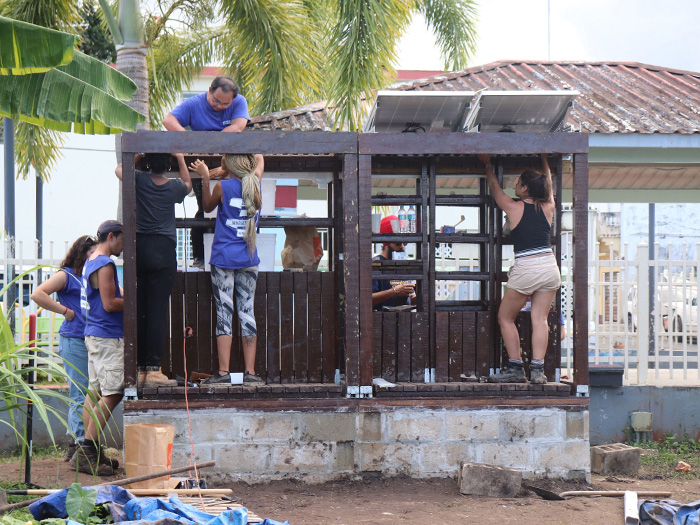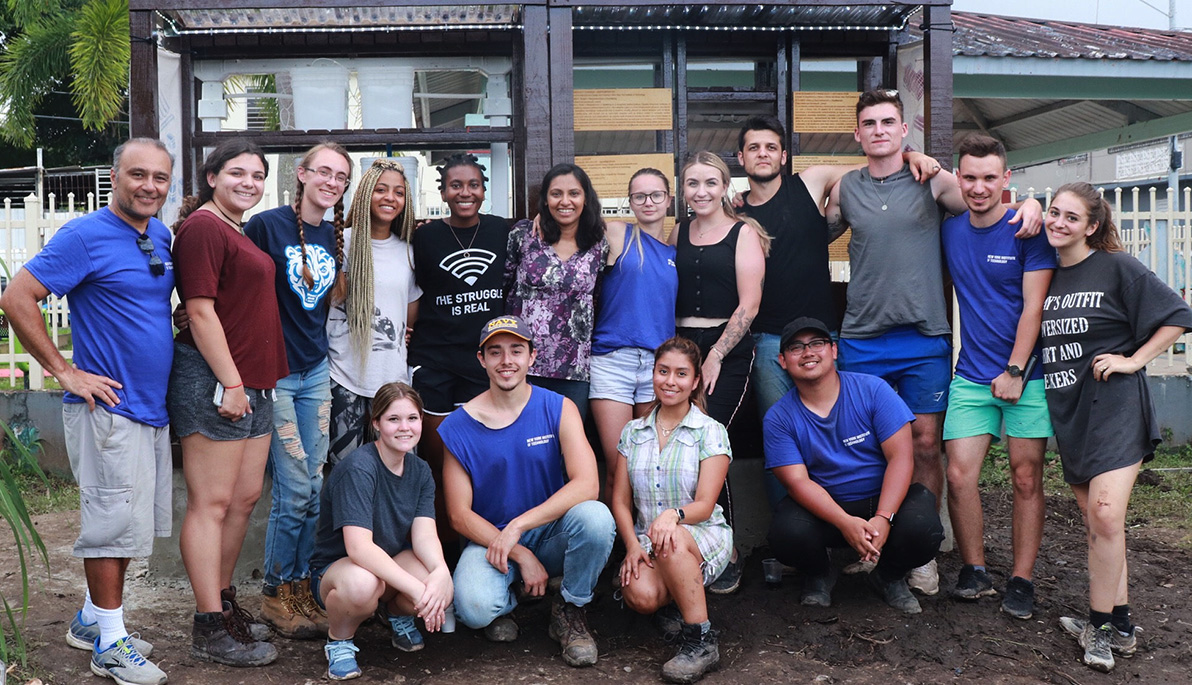News
Taking Puerto Rico by Storm
February 21, 2020
A group of 18 interdisciplinary students from New York Institute of Technology’s Long Island, New York City, and Vancouver campuses traveled to Puerto Rico for 10 days at the start of the spring semester to build a storm station located in the small town of Río Piedras.
Students, along with Associate Professor of Architecture Farzana Gandhi, M.Arch., and Associate Professor and Chair of Interdisciplinary Studies Jim Martinez, Ph.D., built the station in a garden maintained by CAUCE (El Centro de Acción Urbana, Comunitaria y Empresarial de Río Piedras). “[This] is a community empowerment project that meets basic energy, water, medical, and sanitation needs immediately after a disaster, but also offers a community a social space for education, mobile phone charging, and drinking water in an everyday scenario. Solar panels harness energy for basic electric needs, and rainwater is collected and filtered so that it is safe to drink,” said Gandhi, who designed the storm station. “The D.I.Y. project can be reconfigured at different scales with interchangeable modules to suit varying budgets and community needs.”
Students from various disciplines including, architecture, communications, medicine, electrical engineering, and computer science, brought their educational expertise to collaborate on the construction.

A group of interdisciplinary students traveled to Puerto Rico to build a storm station in the town of Río Piedras.
“As an architecture student, this was my first real hands-on experience constructing something at this scale. I had an amazing experience learning new ways to mix cement, build a foundation, and assemble a finished product,” said Louis Santos. “It was an excellent opportunity to engage with construction methods introduced in school and experience building from a new perspective.”
Students helped to better the local community and learned how to work together to have a positive social and environmental impact. “Even though we were a mix of different majors, from different backgrounds we worked well together to complete a common goal by using all of our strengths,” added Sarah Johnson, an electrical and computer engineering major. “I would like to think that we started out as a team and ended as a family. It was the best experience I have had. We aren’t going to stop after one storm station. I believe that this is just the beginning.”
During the spring semester, students will continue to develop ways of working together across disciplines to build social resiliency within communities so that the project can have an even greater impact across the island.


_Thumb.jpg)


